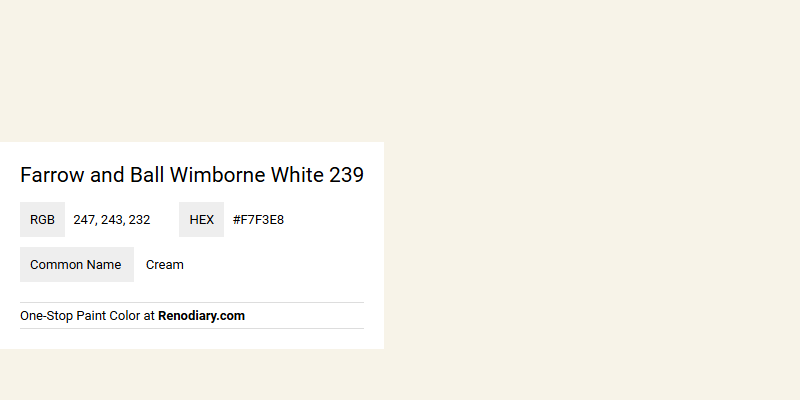
Wimborne White 239 by Farrow and Ball is often perceived as a soft, understated cream, making it a versatile choice for various interior styles. Its subtle warmth, encapsulated by the RGB values of 247,243,232, allows it to harmonize effortlessly with both modern and traditional color palettes. This gentle hue can infuse spaces with an inviting ambiance, enhancing natural light without overwhelming the room's decor.
Color Description
Wimborne White No. 239 by Farrow & Ball is a shade just off pure white, with the addition of a small amount of warm yellow pigment, making it slightly softer than All White. It is described as a warm, light beige shade.
Undertones
The undertones of Wimborne White can be accurately described as having a Yellow and Red hue.
Color Values
- HEX Code: #F7F3E8
- RGB Decimal: 247, 243, 232
- RGB Float: 0.969, 0.953, 0.91
- CMYK Percentage: 0, 2, 6, 3
- Light Reflectance Value (LRV): 89.7%
Usage
Versatile and suitable for interior walls, ceilings, and woodwork. Available in various sheen levels, including 2%, 7%, 20%, 40%, and 95% sheen, making it adaptable for different surfaces such as wood, metal, and concrete or wooden floors.
Atmosphere
This color is brilliant for brightening a room with a warm and light feel, introducing a slight hint of grey without making the space feel too cold. It can create a unique and inviting atmosphere in bedrooms, living rooms, and bathrooms.
Farrow and Ball Wimborne White 239 Color Alternative
Farrow and Ball Wimborne White 239 has a distinctive charm that inspires many to explore similar hues for varied applications. Tikkurila Calla G503, Tikkurila Paper F497, and Dulux Jasmine White 67YY 88/044 serve as exceptional alternatives, each offering subtle differences while maintaining the elegant appeal of the original. These alternatives provide designers and homeowners with versatile options that enrich interior and exterior spaces without sacrificing the refinement associated with Farrow and Ball Wimborne White 239.
Bathroom
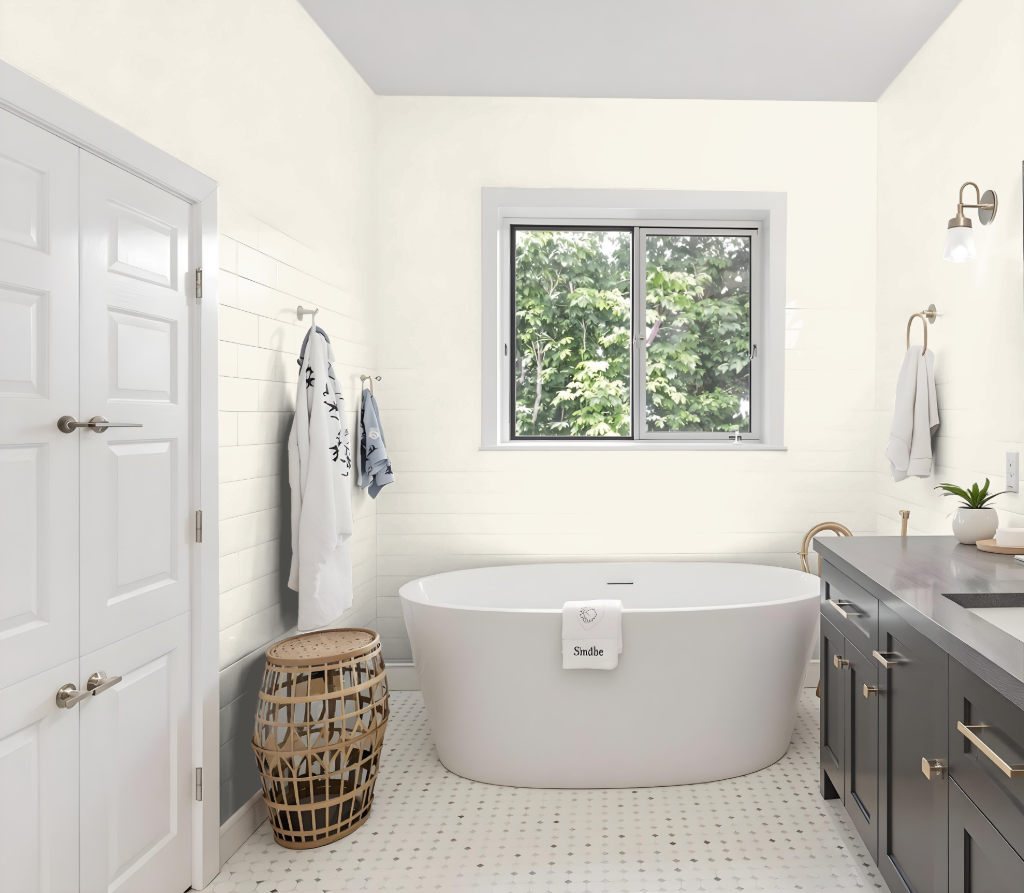
For a bathroom, Farrow and Ball's Wimborne White No. 239 is best used with the Modern Emulsion finish. This water-based paint, with a subtle sheen that provides excellent wipeability and washability, is ideal for areas exposed to condensation and moisture.
Designed to withstand humid environments, the Modern Emulsion’s formulation helps resist mould, scuffs, and stains. Offered in practical tin sizes, it is highly recommended for high-moisture areas to ensure enduring performance and a fresh, long-lasting finish.
Bedroom
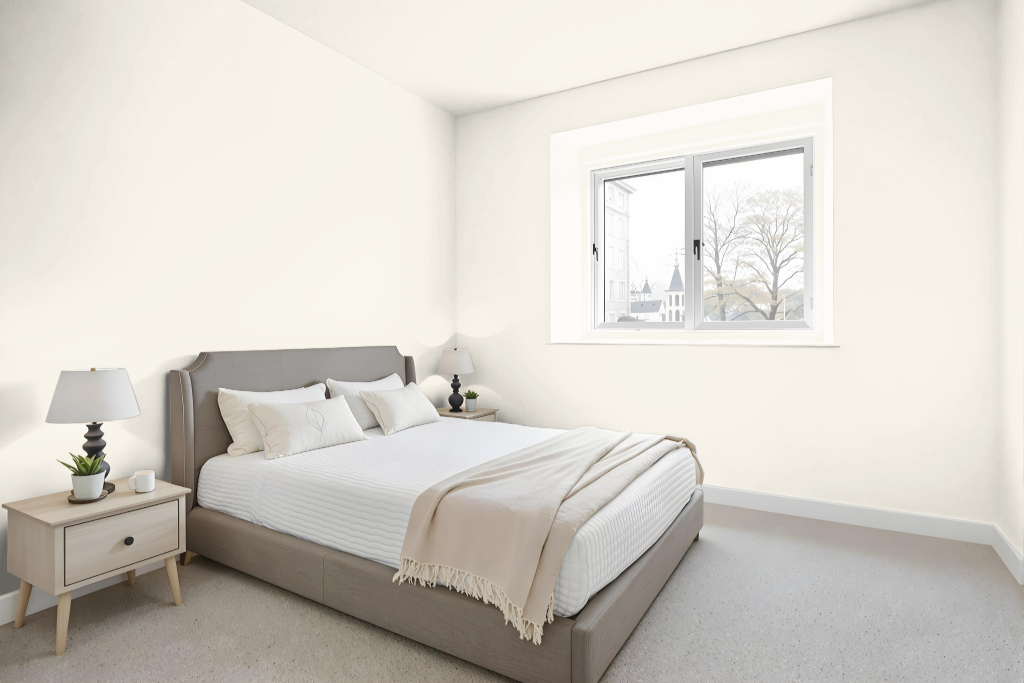
For a bedroom color scheme, Farrow and Ball Wimborne White 239 can create a warm and inviting atmosphere. This calming hue works beautifully on walls and woodwork, brightening the room without overwhelming its cozy feel. It pairs seamlessly with complementary shades, allowing a delicate and creamy aesthetic to emerge in the overall decor.
Using this elegant color in a bedroom helps fashion a relaxing space ideal for rest and tranquility, complemented by a mix of textures and finishes to enhance visual interest and sophistication.
Kitchen
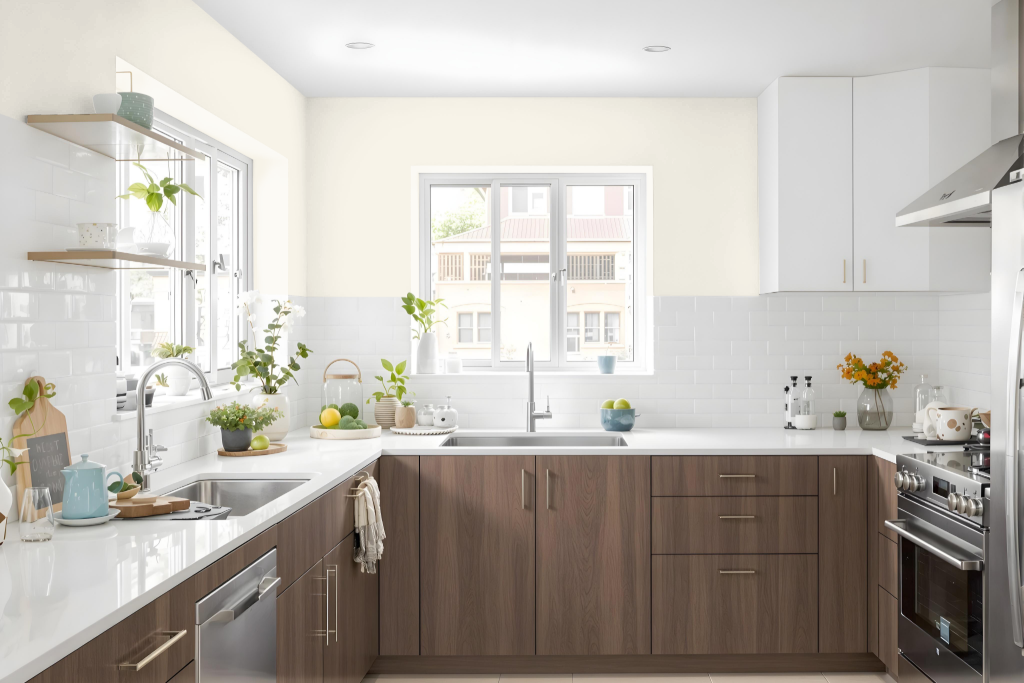
For a kitchen color scheme, Farrow & Ball's Wimborne White 239 provides a practical and appealing choice, complete with finishes that cater to the specific demands of high-use spaces. Its Modern Emulsion finish is exceptionally resilient, washable, and mold-resistant—ideal for areas where cleanliness is a primary concern.
Additional finishes include the Estate Emulsion, which delivers a subtle chalky appearance perfect for less-trafficked zones, and the Modern Eggshell finish that offers a higher sheen ideal for application on diverse surfaces such as interior wood, metal, and kitchen cabinets, ensuring a cohesive and well-protected look throughout the space.
Living Room
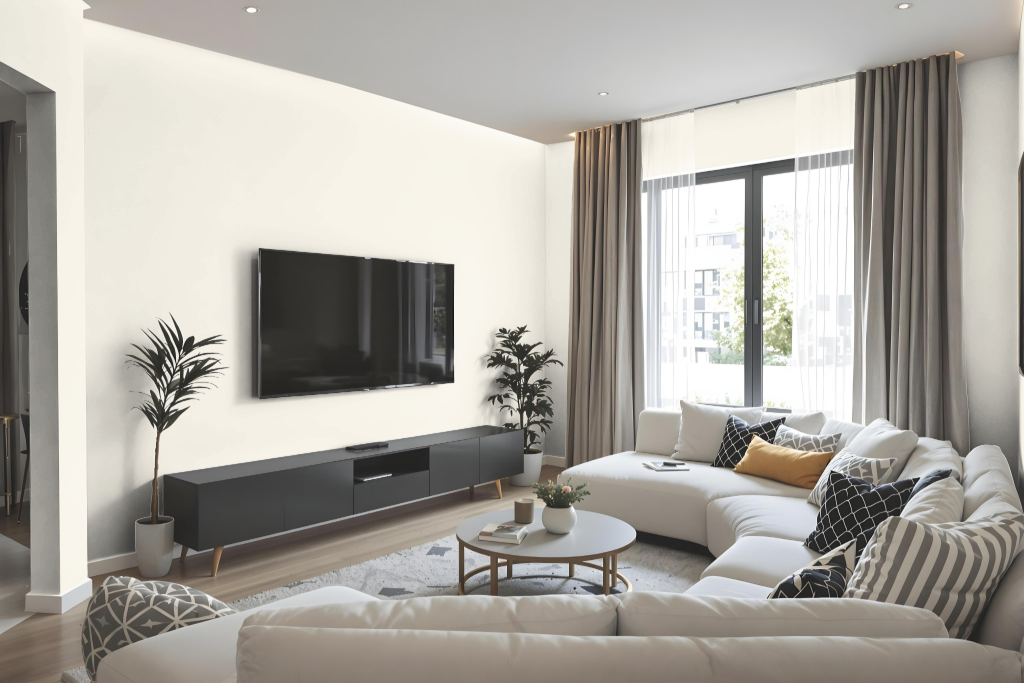
Farrow & Ball Wimborne White No. 239 is an excellent choice for living rooms, brightening the space while maintaining a welcoming warmth. Its use on both walls and woodwork creates a cohesive and inviting environment perfect for enhancing the home's character.
This shade is complemented by matching primers and undercoats, and it comes in a range of finishes that cater to different decorative styles. Its durable, washable properties ensure that the appearance remains fresh and vibrant even in high-traffic areas.
Outdoor
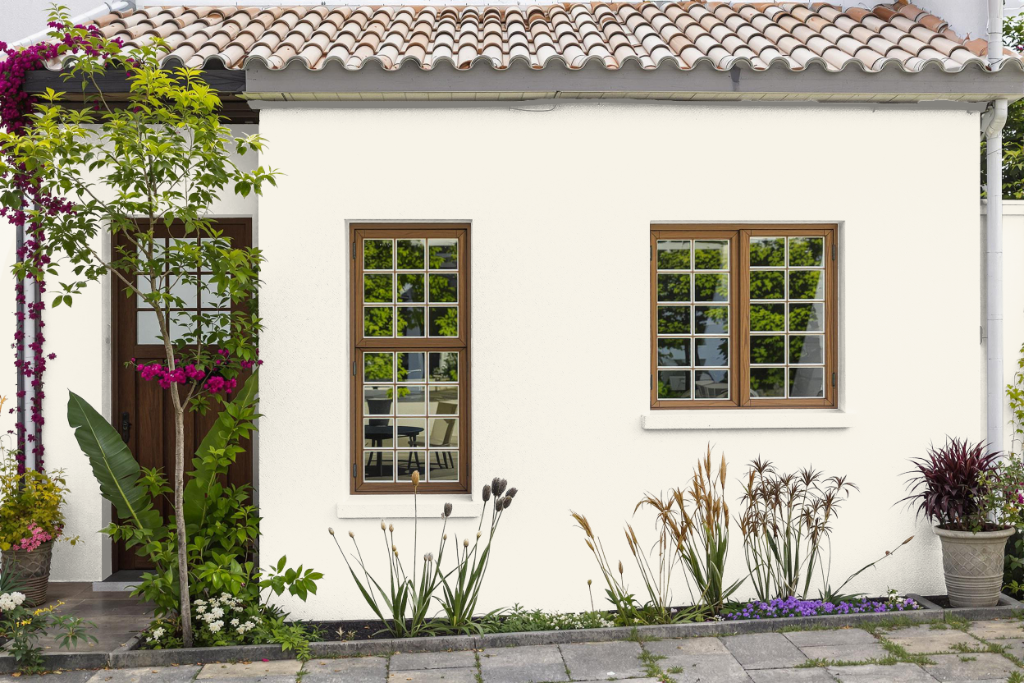
For outdoor use, Farrow & Ball’s Wimborne White No. 239 offers a beautiful home exterior color option that can be applied with specialized finishes to suit different materials. Although not exclusively designed for outdoor applications, it is recommended for wood or metal surfaces when paired with an eggshell finish that provides exceptional flexibility, breathability, water resistance, and protection against fungi and algae.
For brick, render, or concrete surfaces, an exterior masonry finish is preferable due to its high permeability and long-lasting protective properties against the elements. By selecting the appropriate finish based on the surface material, you can ensure that your chosen color maintains its charm and durability through changing weather conditions.
